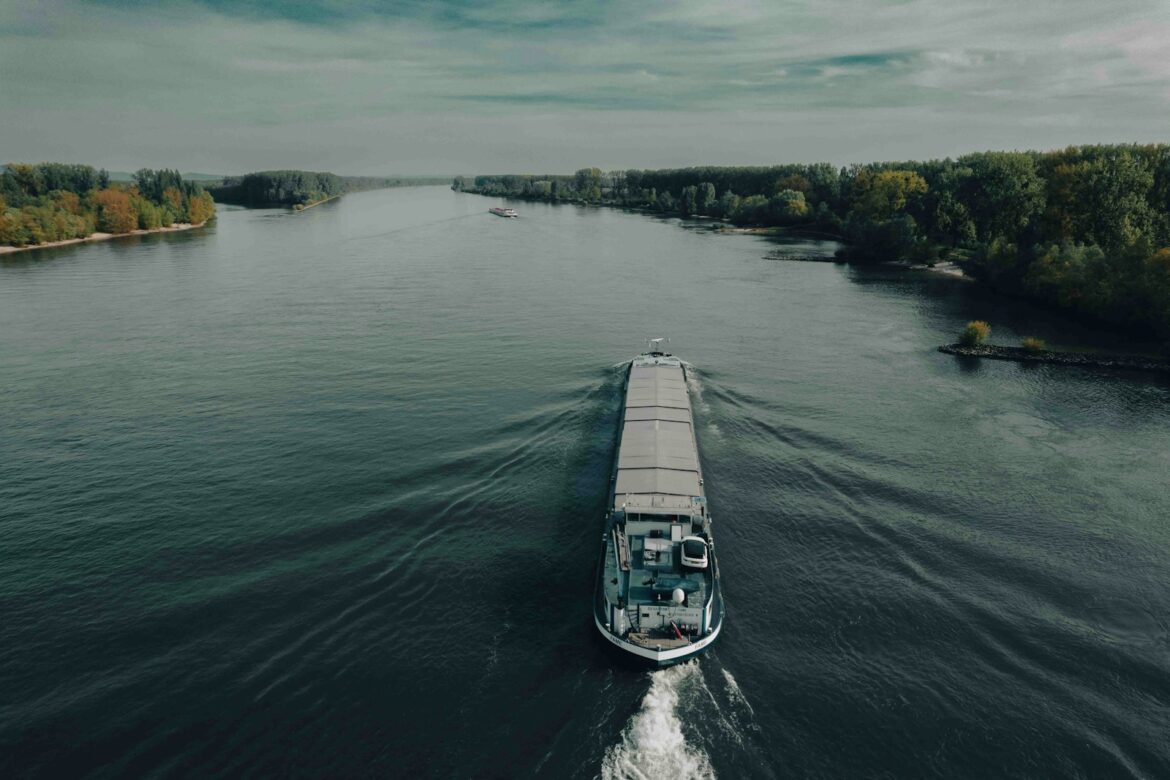Embarking on a journey along the Danube River from Vienna to Budapest is an invitation to explore some of Central Europe’s most enchanting cities and landscapes. This historic river route, which flows through ten countries on its way from the Black Forest to the Black Sea, has been a vital lifeline for commerce, culture, and connection for centuries. Spanning over 1,700 miles, the Danube River has been the silent witness to countless moments of European history, from the rise and fall of empires to the cultural exchange between east and west. Along this specific stretch from Vienna to Budapest, travelers can explore a variety of distinct yet intertwined cultures, where ancient fortresses, baroque palaces, and bustling towns embody the region’s rich heritage.
This journey showcases five captivating stops, each offering a glimpse into the unique character of Austria, Slovakia, and Hungary. Beginning in Vienna, a city renowned for its imperial grandeur, classical music, and coffeehouses, the route takes you through the scenic Wachau Valley to the medieval town of Dürnstein and the splendid Melk Abbey. As you continue downstream, you’ll arrive in Bratislava, Slovakia’s lively capital, where medieval streets meet modern influences. Finally, the journey culminates in Budapest, Hungary’s jewel on the Danube, a city known for its thermal baths, eclectic architecture, and vibrant cultural scene.
This route allows travelers not only to marvel at impressive architecture and landmarks but also to experience the spirit of the Danube—a river that has long been a symbol of unity and resilience in the heart of Europe. Every stop along the way reveals stories of historical evolution, resilience, and cultural exchange, making this journey an enriching and unforgettable adventure for anyone who wants to connect deeply with Central Europe’s cultural roots.
Here’s a guide to five captivating stops along the Danube River, starting from Vienna and ending at Budapest.
1. Vienna, Austria: The Imperial Starting Point
Vienna, Austria’s elegant and historical capital, serves as the perfect starting point for a journey down the Danube. Known for its grand architecture, classical music heritage, and thriving coffeehouse culture, Vienna captures the grandeur of the Habsburg Empire. Begin your exploration at Schönbrunn Palace, the summer residence of the Habsburgs. With its expansive gardens, ornate Baroque architecture, and opulent interiors, Schönbrunn is a UNESCO World Heritage site and a symbol of imperial Austria.
In the city center, St. Stephen’s Cathedral stands tall as an iconic Gothic masterpiece. Its multicolored tile roof and towering spires dominate the skyline, offering stunning views of the city from the top. Nearby, Hofburg Palace—the former imperial winter residence—now houses several museums, including the Sisi Museum, dedicated to the life of Empress Elisabeth, and the Imperial Treasury, where you’ll find the Austrian crown jewels.
Vienna is also world-renowned for its music legacy. A visit to the Vienna State Opera or Musikverein allows you to experience classical performances in venues where Mozart, Beethoven, and Strauss once performed. Vienna’s vibrant coffeehouse culture is another must-experience aspect; enjoy a slice of Sachertorte (a rich chocolate cake) with a Melange coffee at Café Central or Café Sacher. This elegant yet cozy atmosphere embodies Vienna’s unique charm and history, making it an essential first stop on the journey.
2. Dürnstein, Austria: A Medieval Gem in the Wachau Valley
Following the Danube downstream from Vienna, the next stop is the charming medieval town of Dürnstein, located in the heart of the Wachau Valley. This region is renowned for its picturesque vineyards, rolling hills, and well-preserved medieval towns, and is a UNESCO World Heritage site. Dürnstein is particularly famous for its Dürnstein Castle, where Richard the Lionheart was held captive in the 12th century. A hike up to the castle ruins rewards you with panoramic views of the Danube and the surrounding vineyards.
In the town center, the Dürnstein Abbey with its striking blue and white Baroque tower is a landmark you can’t miss. The abbey’s interior is adorned with beautiful frescoes, while its position along the river offers a scenic backdrop. Wine enthusiasts will find Dürnstein an excellent spot for tasting Grüner Veltliner and Riesling, two of Austria’s most celebrated wines. Many wineries and local taverns in the Wachau Valley offer tastings, allowing you to sample the region’s exceptional wines paired with traditional Austrian fare.
Walking through Dürnstein’s narrow cobblestone streets, lined with centuries-old houses and charming shops, transports you back in time, adding a fairy-tale quality to this picturesque town. Dürnstein’s combination of history, natural beauty, and culinary delights makes it a highlight on the Danube journey.
3. Melk, Austria: The Majestic Melk Abbey
Continuing along the Danube, the town of Melk is home to one of Austria’s most famous landmarks, the Melk Abbey. Perched atop a rocky bluff overlooking the river, Melk Abbey is a stunning Baroque structure with a history that dates back over 900 years. Originally a royal palace, the abbey was gifted to the Benedictine monks, who transformed it into one of Europe’s most significant monastic sites.
The abbey’s library is particularly impressive, containing thousands of ancient manuscripts, some of which date back to the medieval period. Its ornate design and ceiling frescoes are masterpieces of Baroque art. The Marble Hall and the Abbey Church are equally breathtaking, with gilded details, intricate paintings, and elaborate sculptures that exemplify the grandeur of the Baroque style.
Melk itself is a charming town with narrow streets, quaint shops, and traditional Austrian architecture. The Wachau Valley surrounding Melk is known for its lush vineyards, apricot orchards, and scenic hiking trails, making it a popular spot for outdoor activities. Taking a river cruise from Melk through the Wachau Valley provides a unique perspective of the abbey from the water and offers a relaxing way to soak in the beauty of this UNESCO-listed region.
4. Bratislava, Slovakia: The Capital on the Danube
Crossing the border into Slovakia, the next major stop is Bratislava, the Slovak capital. Bratislava combines medieval charm with a modern flair, boasting a vibrant cultural scene and a historic Old Town. Start your visit at Bratislava Castle, a massive fortress situated on a hill overlooking the Danube. The castle’s unique, rectangular shape and four corner towers have made it a symbol of the city. The views from the castle grounds stretch over the Danube and across the borders into Austria and Hungary.
In the Old Town, Michael’s Gate—the last remaining medieval gate of the city—leads you to a network of narrow streets filled with cafes, shops, and historical buildings. The Primate’s Palace and Old Town Hall are notable sites, with their colorful facades and Renaissance architecture. One of Bratislava’s more unusual attractions is the UFO Observation Deck atop the SNP Bridge. Shaped like a flying saucer, this modern structure offers panoramic views of the city and the Danube.
Bratislava has a lively cafe culture, and its culinary scene reflects both Slovak and Hungarian influences. Traditional dishes like bryndzové halušky (potato dumplings with sheep cheese and bacon) and kapustnica (a tangy sauerkraut soup) provide a taste of Slovak cuisine. Bratislava’s mix of history, art, and gastronomy makes it a dynamic stop along the Danube route.
5. Budapest, Hungary: The Grand Finale
The final destination on this journey is Budapest, the vibrant capital of Hungary. Known as the “Paris of the East,” Budapest is a city of stunning architecture, thermal baths, and a rich cultural scene. The Danube divides the city into Buda and Pest, with each side offering distinct attractions. Start your visit with a stroll along the Danube Promenade, where landmarks like the Hungarian Parliament Building—a magnificent example of Neo-Gothic architecture—dominate the skyline.
On the Buda side, the Buda Castle and Fisherman’s Bastion offer panoramic views of the river and the city’s iconic skyline. Buda Castle, a UNESCO World Heritage site, houses the Hungarian National Gallery and the Budapest History Museum, both of which provide insight into Hungary’s art and history. Nearby, the Fisherman’s Bastion’s fairy-tale-like towers and arches provide the perfect backdrop for photographs and views of the Pest side.
Crossing over to Pest, visit the bustling Andrássy Avenue and Heroes’ Square, a grand public square that celebrates Hungary’s most important historical figures. Budapest is famous for its thermal baths, and a visit to Széchenyi Thermal Bath or Gellért Thermal Bath provides a unique experience of the city’s mineral-rich hot springs. These baths, some dating back to the Ottoman period, are an integral part of Hungarian culture.
As the sun sets, a river cruise along the Danube offers a magical view of Budapest’s illuminated landmarks, particularly the Chain Bridge, Buda Castle, and the Parliament Building. For a taste of traditional Hungarian cuisine, try gulyás (goulash), pörkölt (stew), and chimney cake from local markets and cafes. Budapest’s vibrant nightlife, with its famous ruin bars and lively pubs, provides the perfect end to a day of exploration.
Conclusion
Completing a journey from Vienna to Budapest along the Danube is like finishing a tapestry woven from diverse threads of history, architecture, and culture. Each stop along this route has offered a unique piece of the story, from Vienna’s imperial splendor to the quaint charm of Dürnstein, the spiritual beauty of Melk Abbey, the medieval allure of Bratislava, and the vibrant atmosphere of Budapest. This journey encapsulates the essence of the Danube, a river that has shaped civilizations, inspired artists, and served as a witness to countless cultural and historical shifts throughout the ages.
As travelers cross the borders from Austria to Slovakia and into Hungary, they encounter an array of influences, from the Gothic spires of Vienna and medieval castles of Dürnstein to Bratislava’s colorful mix of architectural styles and Budapest’s iconic Art Nouveau buildings. Each city and town tells a story that is uniquely its own, yet collectively they reflect the resilience, adaptability, and cultural richness that define this region of Europe. Through castles, palaces, bustling squares, and riverside promenades, this route showcases Central Europe as a place where ancient traditions coexist with modern vibrancy.
In the end, traveling from Vienna to Budapest along the Danube is not only a scenic adventure but also a journey into the soul of Central Europe. This route offers more than just stunning views and historical sites; it provides a rare opportunity to connect with the spirit of a region that has withstood centuries of change and preserved its cultural legacy. For anyone seeking to understand Europe’s historical depth, experience its architectural beauty, and engage with its cultural richness, this Danube journey is one that will linger in memory long after the final stop in Budapest. The route leaves travelers with a sense of wonder and admiration for the people, landscapes, and cities that make the Danube not just a river, but a symbol of European unity and timeless charm.
Learn More


